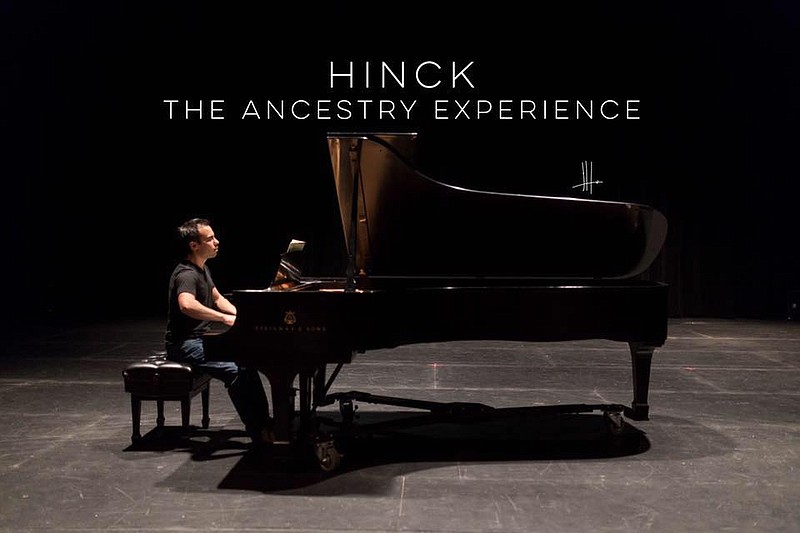If you go
› What: Tim Hinck performs Ravel’s “Le Tombeau de Couperin.”› When: 8 p.m. Friday and Saturday, Dec. 2-3; 7 p.m. Sunday, Dec. 4.› Where: The Edney Innovation Center, fifth floor, 1100 Market St.› Admission: $45 for Friday’s premiere, which includes two complimentary glasses of Champagne and preshow conversations with Hinck and visual artist Phillip Andrew Lewis); $20 Saturday and Sunday; $5 students (does not include drinks; must show ID).› Website: https://hinck_ancestryexperience.eventbrite.comThe movementsRavel’s original design for “Le Tombeau de Couperin”:› Prélude: Dedicated to Jacques Charlot, who had transcribed some of Ravel’s music for solo piano at the composer’s publishers.› Fugue: Dedicated to Jean Cruppi, whose mother had helped Ravel get his comic opera “L’heure Espagnole” performed.› Forlane: Dedicated to Gabriel Deluc, a Basque painter whom Ravel met in a small town in the Pyrenees.› Rigaudon: Dedicated to Pierre and Pascal Gaudin, two brothers whose family was friends with Ravel’s family. The brothers were killed by the same shell on their first day at the front.› Menuet: Dedicated to Jean Dreyfus, the stepson of a woman to whom Ravel wrote about his war experiences while on the front. Ravel recovered at the Dreyfuss family home after his mother died and he was relieved from the army because of his weak health.› Toccata: Dedicated to Joseph de Marliave, who died at the very start of the war. He was a musicologist and the husband of Ravel’s favorite pianist, Marguerite Long, who premiered “Le Tombeau de Couperin.”Source: www.favorite-classical- composers.com
Classically trained pianist and composer Tim Hinck has chosen Chattanooga's innovation district for a poignant musical memorial.
Over three nights this weekend, Dec. 2-4, Hinck will perform Maurice Ravel's monumental "Le Tombeau de Couperin," a suite of six Baroque-inspired dances for piano, each dedicated to a friend who died fighting in World War I.
This "musical adventure," he says, "will explore ancient traditions that keep us tied to those who have gone before us: our ancestors, our lost friends, our role models and teachers who have passed."
Hinck describes "Le Tombeau de Couperin" as a "dazzling, monumental" expression of emotion. Rather than mournful, "Ravel's masterwork is a celebration of life," he says.
The weekend performances also will showcase the digital visual work of award-winning artist Phillip Andrew Lewis and the flavors and aromas of French Champagne.
According to online sources, Ravel initially planned to write a suite of French dances for piano as an homage to 18th-century composers, particularly Francois Couperin. But the first world war broke out in 1914, and people he knew started dying in the struggle. So Ravel added dedications to his dead friends.
It's said that Ravel was eager to join the fighting when the war started, but he was 39 years old and frail, so he volunteered as an ambulance driver instead of becoming the pilot he aspired to be. He and his truck, named Adelaide, came under frequent heavy fire, and Ravel suffered from exhaustion and insomnia. Eventually his health broke down.
He recuperated at the family home of a woman he had been writing to about his war experiences, the stepmother of Jean Dreyfuss, to whom the fifth dance is dedicated. He finished "Le Tombeau de Couperin" in this tranquil setting. The suite premiered in 1919 after the end of the war.
The literal translation of "Le Tombeau de Couperin" is "Couperin's grave." However, in musical tradition, a "tombeau" is a memorial piece or collection of pieces. Ravel apparently chose Couperin, an important 18th-century French composer, as an artistic representation of France.
